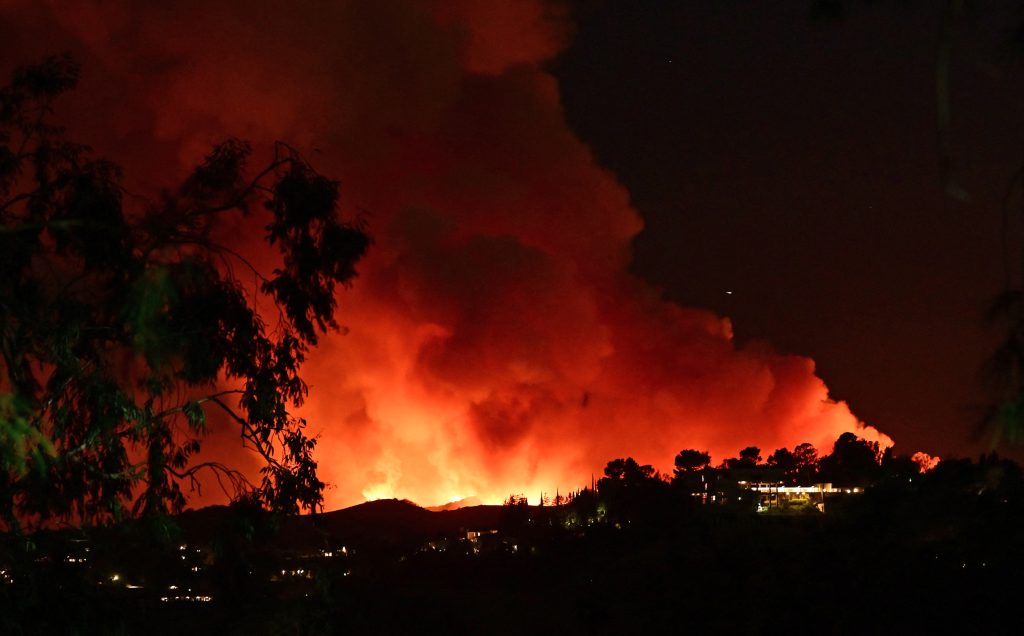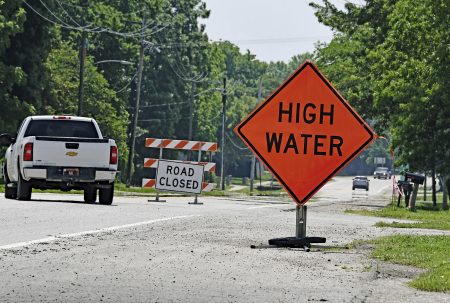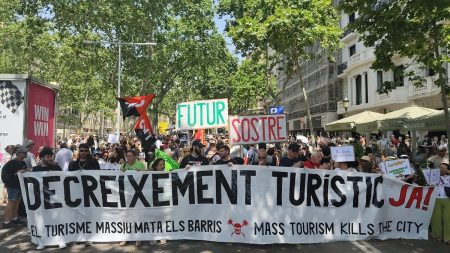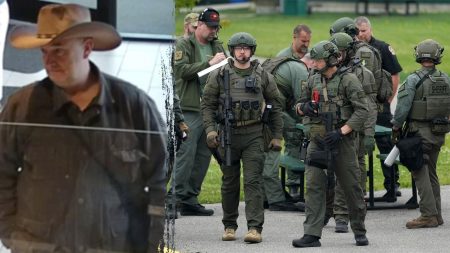The Palisades Fire, raging north and west of Los Angeles, has emerged as the most destructive wildfire in the city’s history, escalating anxieties as it encroaches upon the densely populated San Fernando Valley. Fueled by relentless winds and challenging topography, the fire has consumed over 21,500 acres, threatening the homes and livelihoods of nearly two million residents. Efforts to contain the inferno have been partially successful, achieving 11% containment as of Saturday morning, but the persistent threat of wind-driven expansion looms large. Mandatory evacuation orders have been issued for areas immediately threatened by the advancing flames, highlighting the urgency of the situation.
Social media has become a vital platform for real-time updates and firsthand accounts of the fire’s relentless march. Videos and images shared on platforms like X (formerly Twitter) depict the fire’s proximity to the San Fernando Valley, painting a stark picture of the impending danger. Aerial footage reveals the fire’s relentless progress towards residential areas, while reporters on the ground provide updates on the deployment of fire retardant along Mulholland Drive in a desperate attempt to slow its advance. Residents’ posts reflect a mix of fear, disbelief, and concern as they witness the fire’s inexorable approach towards their homes and communities.
The impending threat to the San Fernando Valley has galvanized responses from officials and community members alike. Los Angeles Mayor Karen Bass issued mandatory evacuation orders for areas spanning from Sunset Boulevard to the Encino Reservoir, and from the 405 Freeway to Mandeville Canyon, emphasizing the immediacy of the threat. Elected officials like House Democrat Luz Rivas have shared personal observations of the fire’s ominous presence, amplifying the call for vigilance and preparedness. CAL FIRE’s updates paint a sobering picture of the fire’s behavior, noting its wind-driven nature and the potential for further spread due to anticipated Santa Ana winds.
The Palisades Fire comes amidst a larger wildfire crisis gripping Los Angeles, with multiple fires burning across the region. The official death toll from these fires has tragically risen to 11, with the grim expectation of further casualties as search and rescue efforts continue. President Biden has acknowledged the devastating loss of life and the ongoing search for the missing. California Governor Gavin Newsom has called upon President-elect Donald Trump to visit the affected areas and witness the scale of the disaster firsthand.
The challenges faced by firefighters battling the Palisades Fire are multifaceted. The fire’s rapid spread, fueled by dry conditions and strong winds, makes containment efforts exceptionally difficult. The rugged terrain presents further obstacles, hindering access and limiting the effectiveness of firefighting strategies. The anticipated Santa Ana winds, known for their dry and gusty nature, pose an additional threat, potentially exacerbating the fire’s spread and hampering containment efforts further. Resources are being stretched thin as firefighters work tirelessly to protect lives, property, and critical infrastructure.
The immediate future remains uncertain, with the Palisades Fire’s trajectory dependent on weather conditions and the success of ongoing firefighting efforts. The anticipated “new wind event” predicted for Saturday night, with wind speeds expected to reach 20-40 miles per hour, adds another layer of complexity to the situation. The potential for these winds to further fuel the fire’s spread underscores the critical need for continued vigilance and proactive measures to protect lives and property. The coming days will be pivotal in determining the fire’s ultimate impact on the San Fernando Valley and the surrounding communities.










